High-quality content isn’t enough to help you rank high on search engines. The thing is, as you create your content and enhance its value, you must also think of technical SEO optimization for your website.
This way, whatever you’re offering will reach the target audience, and you’ll be able to meet your end goal. After all, it’s zero work to have the best content that your audience can’t find on the internet.
For that reason, this post will shed light on the best tips to take your technical SEO to the next level and scale up your rankings on search engine result pages.
In other words, you’ll learn the ultimate technical tactics in SEO and the best tools and software (SEO tech) for effective technical optimization. But first, let’s have a look at the exact meaning of technical SEO.
What is Technical SEO?
Look at technical SEO as techniques that focus on fine-tuning your site’s technical aspects for top efficiency.
Also, it ensures search engine bots can crawl your website content effectively and index your site correctly for better organic rankings.

That means that top rankings on search engines like Google are firmly linked to excellent technical optimization in your site.
Better yet, smooth technical optimization techniques improve your site’s user experience. Therefore, your web visitors will spend more time on your content.
So, to avoid lower search engine rankings and poor user experience in your site, here are some actionable tips in technical optimization SEO that will yield excellent results.
And if you prefer that someone else handles this for you, you could partner with a reliable marketing agency to help you drive continued online success. What’s more, marketers can help get you comprehensive SEO strategies that are tailored specifically to meet your needs.
Technical SEO Checklist For Ultimate SEO Results
Tip 1: Migrate Your Site to HTTPS protocol
Hypertext Transfer Protocol Secure (HTTPS) is a secure connection portal that ensures tight security when potential clients access your site.
On the other hand, Hypertext Transfer Protocol (HTTP) is vulnerable to attacks by third parties. For this reason, HTTPS plays a huge role in technical SEO, which means that it’ll greatly influence search engine rankings.
In 2014, Google declared HTTPS as a lightweight ranking factor. The best part is, sites operating on HTTPS rank better on Google than those on the insecure protocol (HTTP). The worst part is web browsers like Google Chrome flag HTTP websites as insecure.
That is to say, searchers can pick the safe sites to visit and ignore those open to security breaches. If browsers flag your site as insecure, your web traffic will drastically fall. And this can cause significant harm to your online visibility and search engine rankings.
To maintain a higher ranking or level up, consider operating your website on a secure protocol (HTTPS) by installing security certificates (Secure Socket Layer (SSL) certificates).
Once you’ve done this, the security wall in your site will be thicker and firm. You can confirm by looking for the initials ‘HTTPS’ at the beginning of your web address.
Also, you can look for a padlock that signifies successful migration to the HTTPS protocol.
What’s more, obtaining a security certificate for your site shouldn’t be a headache. You can get free and authentic SSL certificates from Let’s Encrypt, a non-profit Certificate Authority (CA).
Alternatively, you can buy security documents from other credible providers like DigiCert, Comodo SSL, and Geo Trust.

It’s essential that you only get your security certificates from trusted providers to guarantee maximum security on your site.
Remember, a 100% secure website reflects excellent technical SEO and better rankings on search engine result pages.
Tip 2: Make Your Website Mobile-Friendly
One of the best ways to improve technical SEO is to refine your site to fit perfectly on mobile devices.
This involves making your website compatible with devices like smartphones and ensuring it is fully responsive. The importance of a mobile-friendly website cannot be stressed enough. And why is this important?
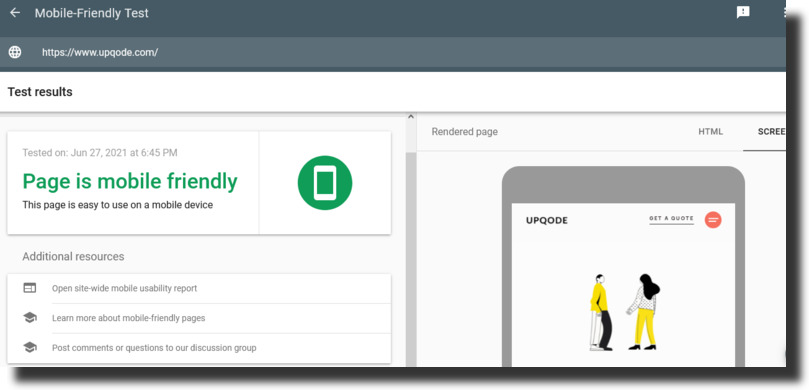
Mobile devices are linked to approximately 50% of global web traffic, and the figure has been consistent since 2017.
Recent studies have revealed that in early 2021, mobile devices generated 54.8% of worldwide web traffic. This explains why search engines like Google reward better rank to mobile-friendly websites.
With that in mind, it’s apparent that you’ll be missing massive web traffic if your site is unresponsive on mobile devices.
As a business owner, that will mean wasting perfect opportunities to generate new leads and improve conversion rates.
So, what should you do to make your site friendly to mobile devices? Here’s a close look at some tactics you can use to enhance your site’s mobile friendliness and improve technical SEO
1. Ensure your website design is Mobile-responsive.
It means the display of pages in your site should be flexible in that information can fit perfectly the small screen size of mobile devices. Therefore, be sure to use mobile-responsive web designs for better rankings on search engines. Note that Google recommends mobile responsive web designs.
2. Make your website’s buttons large enough for mobile devices.
Clicking on small buttons on a small screen can be hard to deal with. Also this might be annoying for web visitors using mobile devices. So, ensure your buttons are large enough for mobile users.
3. Use large font sizes in your content.
Imagine a situation where web visitors using mobiles struggle to read your content due to the tiny font. What’s the worst that can happen? Odds are, visitors will instantly choose another site, and you may lose a loyal following. Remember, your web visitors want instant solutions without struggles. So, use a large enough font size that is clear.

Responsinator results on UPQODE
4. Regular Mobile Tests.
Testing mobile responsiveness and friendliness is looking for possible errors that can breed problems for mobile users.
Performing the test can mean accessing your site as a mobile user and inspecting the user experience. Also, it can mean using responsive web design test tools.
The following are some of the best mobile test tools you can employ (According to Wishdesk):
- Responsinator
- Emulators
- Screenfly
- ViewPort Resizer
Tip 3: Make Your Website Super-Fast
Site speed is a big deal in SEO. In April 2010, Google revealed that they were obsessed with speed, and therefore, recruited site speed as a ranking factor in their search algorithm.
That then means that high load-up speed is linked to better rankings on Google. As such, it also implies that, if your site is slow in load time, you’ll not rank as high on search engine result pages (SERPS).
On top of that, slow site speed is famous for skyrocketing bounce rates and harming your search engine rankings. Studies by Google discovered that page load-up delays from 1 to 3 seconds heighten bounce rates in your site by 32%.
Most importantly, 1 to 5 seconds delays increase bounce rates by 90%. Think of bounce rates as the number of times searchers access your site and leave immediately.
The point is that site speed affects your rankings on search engines, and influences lead generation and conversion rates.
Research has revealed that a load-up time with one second delay is linked with a 7% loss in conversions, 11% reduced page views, and 16% decrease in customer satisfaction.
So, how do you super-charge your site to ensure it’s running at a high load speed?
1. Use a Content Delivery Network (CDN) in your Site
As the name ‘content delivery’ suggests, the sole function of a CDN is fast content delivery to your web visitors. Here’s a look at how CDN will speed up your site’s load-up time.
The physical distance between your site’s server and the geographical location of searchers contributes hugely to a slow load-up speed. For instance, if your web host server is located in the US, web visitors in London will experience longer delays than those in the US.

But with a CDN, this drawback is overruled, ensuring that you maintain the same load-up speed in different geographical locations.
The thing is that a CDN stores a cached version of your site’s content in multiple access points known as PoP (Point of Presence), where networks or communication devices can share a connection.
In the mentioned example, a London web visitor to your US-hosted website will experience a super-fast load-up time due to a local UK (United Kingdom) PoP if you use a CDN.
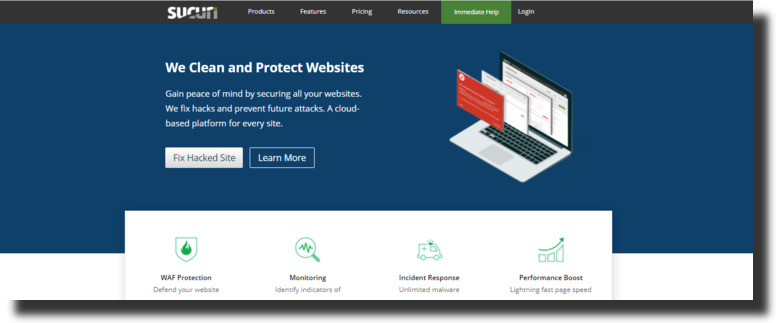
In general, a CDN ensures your site remains super-fast despite the geographical location of the web visitors.
This way, worldwide web traffic can steadily flow into your website and maintain better search engine rankings globally.
The following are some of the best CDN software tools in the industry
Best CDNs In the Industry
- Google Cloud CDN
- Cloudflare
- Amazon CloudFront
- Sucuri
- StackPath
2. Use Small-sized Images, Optimized Videos, and other files
A bunch of large images in your site can lower your site’s load-up speed. So, in terms of big-size images, it implies that they’ll burden your site, resulting in slow operation. And this can cause significant harm to technical SEO.
So, how do you use the nice images you love and still supercharge your site’s load-up speed? Well, it’s simple. Consider compressing your images.
For example, you can reduce a 20Mbs picture into a kilobyte-sized image without a noticeable change in quality.
The same applies to videos and any other file format you upload on your site. With that said, here’s a list of some image and video compressor tools you can use:
Image Compressor tools
- JPEG Optimizer
- Optimizilla
- Kraken.io
- Online Image Optimizer
Video Compressor tools
- WondershareUniconverter
- Filmora Video Converter
- BlazeMedia Pro
- Final Cut Pro X Compressor
3. Leverage Browser Caching
Browsers used by searchers can cache (store) many details from your site like JavaScripts, stylesheets, and images.
As a result, web browsers don’t have to entirely reload your site’s pages whenever searchers return to your website. This ensures that you have an even faster reload.
To leverage browser caching, you can set up the properties of your site’s cache behavior. You can achieve that by using headers (Meta tags) to control the details browsers can cache and the maximum time to store the information.
In other words, you can set the expiry period of the data cached by browsers. Setting a longer expiry period means an extended time of super-fast load-up speed whenever people revisit your site.
4. Keep Plugins and Software Up-to-date
Outdated software and plugins in your site can be the reason behind a crippled load-up speed. Why? That’s because such tools are in their old versions, which means they won’t function optimally. Hence they’ll reflect slow site speed.
The solution is updating them to their most recent versions. This way, they’ll work perfectly, and your site will run smoothly at top speed.
After employing the speed-inducing tips on your site, it’s time to check out whether speed performance is enhanced or improved.
You can use software tools to test your site’s speed where they’ll analyze your website, flag issues, and generate possible solutions to make it faster. This way, you can fix problems quickly and achieve top speed easily.
The following are tools you can use to speed tests on your site.
With all issues fixed and the site running fast, you’ll improve the technical SEO making it easier to jump to the top of Google and other search engines’ result pages.
Tip 4: Create And Optimize XML Sitemaps
XML sitemaps are special documents that list all the pages and their specific content. These are files that provide a comprehensive overview of all the available content on your site.
They help provide additional information about URLs in your site (like when they were last updated) and their relations to each other.
For search engines, an XML Sitemap acts like a roadmap leading to information in your site. It’s like blueprints for the search engine bots to follow to reach your site’s content.
In light of that, a website with XML sitemaps makes crawling and indexing easier for search bots. In return, the site can easily get ranked in the search engine result pages.
With that in mind, it’s evident that sitemaps are critical aspects of technical SEO. Without them, search bots will strain to understand your content.
Here’s a list of benefits you’ll get by having an XML sitemap on your site:
- Search engine bots will crawl your site more effectively
- Sitemaps enable search engines to prioritize content as specified by you
- Search engines like Google will know how often you update your content, and therefore, new content on your site can get crawled quickly.
However, it’s worth noting that having sitemaps is not a direct ticket to better ranks. Content quality and relevance are still in the game.
How to create XML Sitemaps on your site
The process of creating XML sitemaps depends on your web host. That said, we’re about to look at XML sitemap creation on the most used web hosts. That is:
1. Creating an XML Sitemap in WordPress Websites
If WordPress hosts your site, your sitemaps won’t be generated automatically. You’ll have to create them manually using specific WordPress Plugins. The best two you can choose from are the Google XML Sitemaps and Yoast SEO Plugins.
If you opt for the first one, you’ll need to install the plugin and generate an XML sitemap. Follow these steps.
Log into your WordPress dashboard and navigate to Plugins –> Add New. Afterward, be sure to look for ‘Google XML Sitemaps,’ hit the ‘Install Now’ button, and then click ‘Activate.’ Once the plugin is active, it will generate the sitemap automatically.
Also, you can configure the settings to prioritize pages over others or exclude the ones that are less important from the sitemap. To open the plugin configuration page, go to Settings –> XML Sitemap – > Basic Options.
After this, scroll down to ‘Sitemap Content’ and uncheck the boxes you want to exclude in the sitemap. Lastly, click the ‘Update Options’ to save your changes. Remember, you can select other preferences in the ‘Basic Option’ menu.
When using the Yoast SEO plugin, the installation and activation procedures are the same as that of Google XML Sitemaps.
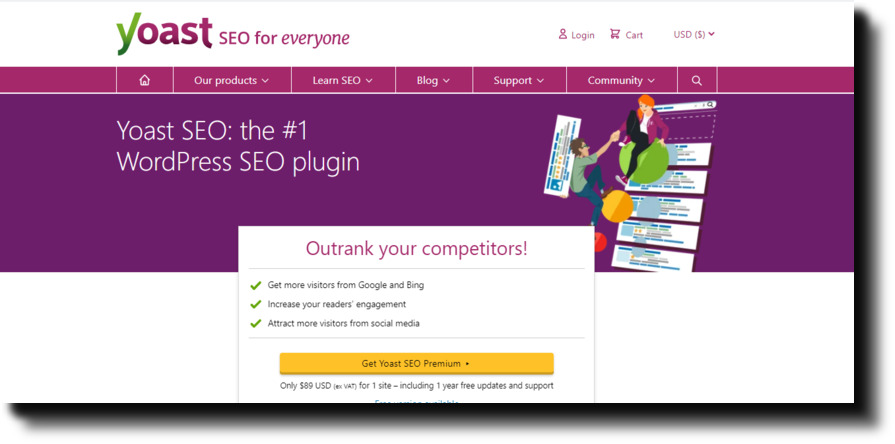
After activating the Yoast SEO plugin, navigate to SEO – > General –> Features and turn on the ‘XML sitemaps’ toggle to generate your sitemap.
2. Creating an XML sitemap in Wix and HubSpot Hosted sites
If your site is powered by Wix or HubSpot hosts, you don’t have to worry about a manual generation of sitemaps or installation of plugins. The thing is, the hosts are cloud-based, and therefore, they’ll generate your sitemap automatically.
To view your XML sitemap in the HubSpot account, click the settings button in the main navigation bar and go to Domains & URLs – > Sitemap.
After that, hit the “View XML file” button. You can also change your preferences on the sitemap. Make sure you save your changes once you’re done.
Now that you’ve generated an XML sitemap, it’s time you submit it to Google because it has an overwhelming number of active users.
Recent research shows that Google dominates the Search engine market with a 92.05% market share. Having that in mind, the following is a procedure to submit your sitemaps to Google.
Step by Step Procedure of Submitting Sitemaps to Google.
Step 1: Sign in to Google Search Console. (If you don’t have an account, sign up and then sign in).
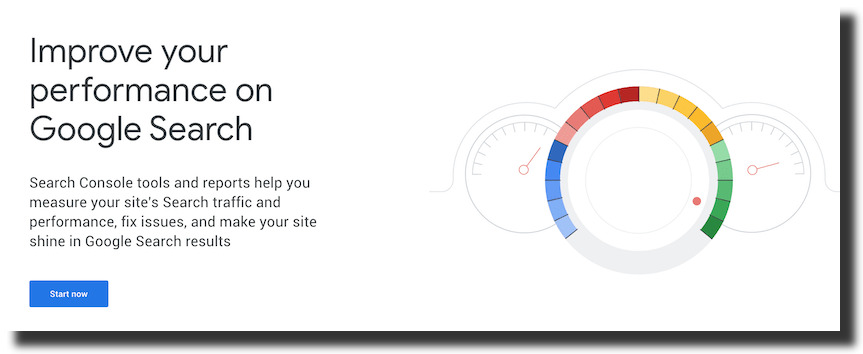
Step 2: Navigate to the sidebar, and select your site.
Step 3: After selecting your site, hit the ‘Sitemaps’ button. If you don’t see this button, click on the ‘index’ to bring the ‘sitemaps’ option.
Step 4: Go to the ‘Add a new sitemap’ and input your sitemap URL in the empty field
Step 5: Click the Submit button
That’s it. After the submission, Google will crawl your site, and if all other SEO considerations are in place, you’ll surely get high ranks in the result pages.
Sitemap Pro Tips – Sitemap optimization techniques
For fully effective sitemaps that are insanely productive in SEO, you need top-notch optimization techniques.
This way, effective crawling and indexing by search engine bots will be beyond doubt. Here’s an inside look at the best tips in sitemap optimization.
Technique #1. If your site is huge with tons of URLs, have sub-sitemaps.
Some sites are huge with numerous URLs. If that sounds like your site, here’s something to keep in mind. Sitemaps are limited to 50 000 URLs per file.
That means, if you have tons of web pages, you should create several sitemaps instead of one with a massive list of URLs.
In other words, break up your sitemap into sub-sitemaps if you’re dealing with many pages and URLs. That is a great way to reveal your content to search engines like google.
Even better, maintenance of sitemap files will be far way easier.
Technique 2: Practice Extreme Care With Dates
Every URL in your sitemap has a ‘last modified’ date. Messing up with the date can yield ugly results that will frustrate you.
Google warns that updating the URL dates with zero changes in web page content can trigger spam filters in search engines.
It is a black hat technique to trick users that content is new and fresh. Therefore, avoid practicing that on your site.
Again, only update URL dates in your sitemaps when there’s a notable change in your site (like adding new content).
Technique 3: Maintain Your Sitemap Below 50 MB
In November 2016, Google and Bing increased the recommended sitemap size from 10mbs to 50mbs. That is to say, the uncompressed version of a sitemap must be under 50mbs. So, optimizing your sitemap means obeying the set standards for more tangible results.
Tip 5: Optimize Internal Links
Another great way to improve your technical SEO is optimizing your internal links. If you’ve ever used hyperlinks in a page to point back to another piece of content on the same site, you know exactly what an internal link is.
Internal links weigh less in SEO compared to external links. But that doesn’t mean you should dismiss the efforts to optimize them on your site.
They still have a role to play in the link-building process. According to Databox, 42% of SEOs spend equal time on building internal and external links. That goes to show that internal links play a key part in SEO.
But wait. Why are internal links essential and what’s their role in SEO? The thing is, internal links are critical in boosting your authority. This is because they tip-off search engine algorithms that you’ve comprehensively covered a topic in your site.
Also, they help search engines to comprehend the information hierarchy in your site and create SEO-friendly site architecture. In return, chances of beating your competitors on the search engine result pages shoot up rapidly.
So, how do you optimize internal links on your website?
Internal Links Best Practices
1. Use Top-Ranking Pages in internal link building
The best way to pump in SEO value to a newly published post is by linking to the top-ranking pages on your site. Here’s how it works.
If, for instance, you’ve published new content on a topic, you should identify the most relevant post on your site to link back to.
But again, how do you determine the best post on your site to link to?
Assuming that you’re already started on SEO, type the following search operation on Google or any other search engine: ‘site: mywebsite.com topic tied to your new post.’
If, for example, your site’s web address is ‘kibolela.com’ and a keyword in your new post is ‘financial management,’ the above search operation will be like this:
Site:kibolela.com “financial management”
After doing this, select the first post on your site to appear on the result pages and link back to it in your new post.
Do this in all internal link-building processes on your site, and you’ll create a hierarchy, which is a good feature in technical SEO.
2. Use Key-Word Rich Anchor Text
Anchor text is the words you’ll place the hyperlink on. The anchor text should tell search engines the content behind the hyperlink, which is to say, it should provide a clue of what the page you are linking to talks about.
For example, if the page you’re linking to talks about “The Best Writing Techniques,” the anchor text in your new post should be a phrase like ‘Best writing Techniques.’
The point is the text you place your hyperlink on should contain the keywords of the internal page you’re linking to.
Here’s more about anchor text in internal link building.
- Avoid generic anchor text like ‘click here,’ ‘check this out.’ Instead, be specific and show what content you’re linking back to.
- Always use anchor texts that are related to the pages you are linking to.
- Use short anchor texts
3. Ensure Your Internal Links are Do-follow Links
In simple terms, all your internal links should be clickable (That is, they should be hyperlinks).
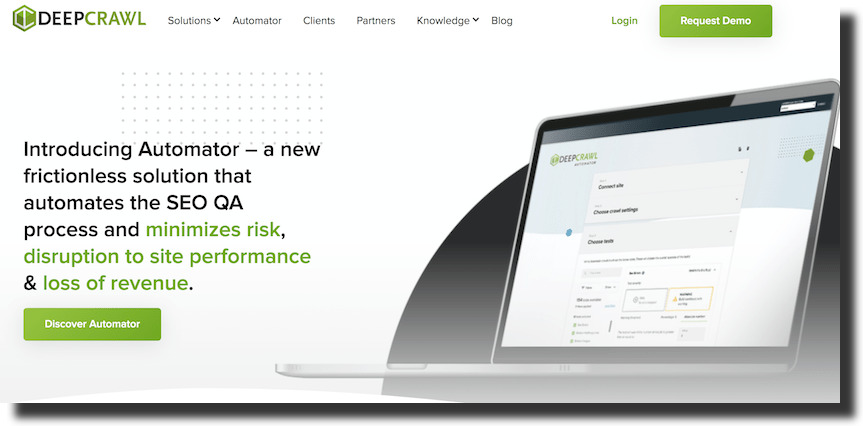
As a result, Google bots and other search engine crawlers will be able to follow the link. Your internal link-building efforts will be in vain if search bots cannot follow the links.
It may sound obvious that your internal links should be clickable. But the truth is some plugins can add the No-follow attribute to your clickable links. So, be sure to check.

4. Perform an Internal Link Audit Using Google Search Console
You can use Google Search Console to perform a basic internal link audit on your site. With this tool from Google, you can inspect the setup of internal links on your site.
Also, it can help you spot irrelevant pages with more than enough internal links pointing to them. All you’ve got to do is log into your Search Console account and get the internal link report.
Tip 6: Regular Technical SEO Audits
After implementing the above techniques, you should have regular website audits to track the general performance of technical SEO. In other words, perform technical SEO audits on your site.
This way, you’ll be able to identify the common errors like crawling issues, problems bred by poor internal link building, site load-up speed issues, and security problems related to SEO.
The point is, SEO audits will shed light on technical problems in your site and help you fix them as fast as possible for better SEO performance. You can use the following tools for the audits:
- Ahrefs
- Google Analytics
- Google Search Console
- Moz
- Deep Crawl
- HeadMasterSEO
Increase Your Site Value With Technical SEO Services
Note that SEO is evolving rapidly. As such, marketers and business owners have to adapt. Even then, it’s still possible for you to give your site that edge over the competition.
When developing a digital marketing strategy, many digital marketers tend to focus on optimizing page content, implementing high-ranking keywords, and using quality backlinks.
While these off-page and on-page SEO techniques are crucial to your SEO checklist, note that technical SEO is just as important to help get you ahead of your competition.
Even though there’s a lot you need to consider, remember that you don’t have to be a top SEO expert. All you need to get started is to make an effort to understand the fundamentals of SEO.
In doing so you’ll see a huge difference in your site’s engagement, click-through rates, and rankings.
Technical SEO Checklist For Ultimate Results
Here’s a summary of tips and tools you can use to improve your website Technical SEO
| Strategies | Tools |
| #1. Migrate your site to HTTPS protocol | DigiCert, Comodo SSL, Geo Trust. |
| #2. Make your site mobile-friendly | Responsinator, Emulators, Screenfly, View Port Resizer |
| #3. Create and Optimize XML sitemaps | WordPress, Wix, HubSpot |
| #4. Optimize Internal Links | Google Search Console |
| #5. Make your website Superfast | Google Cloud CDN, Cloudflare, Amazon Cloud Front, Sucuri, Stack Path |
| #6. Regular Technical SEO Audits | Ahrefs, Google Analytics, Google Search Console, Moz, Deep Crawl, Head Master SEO |



